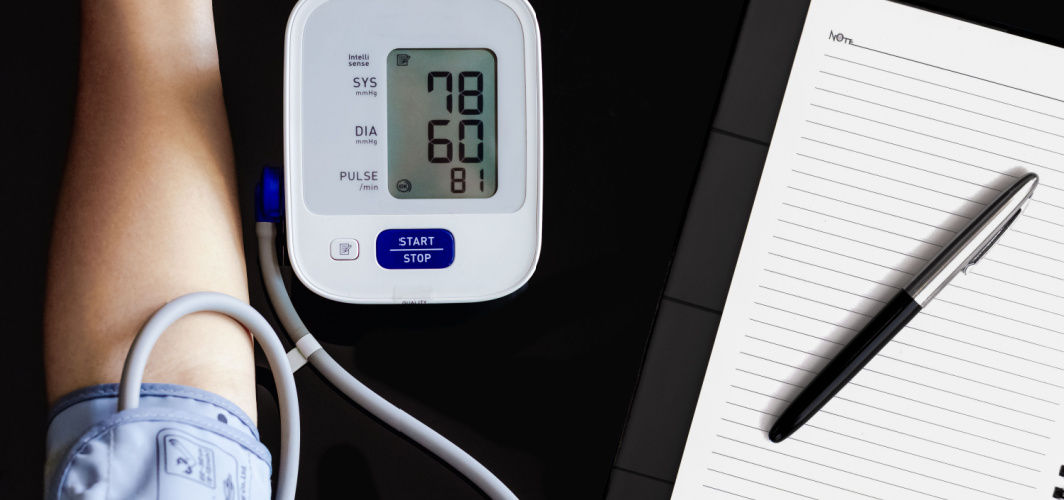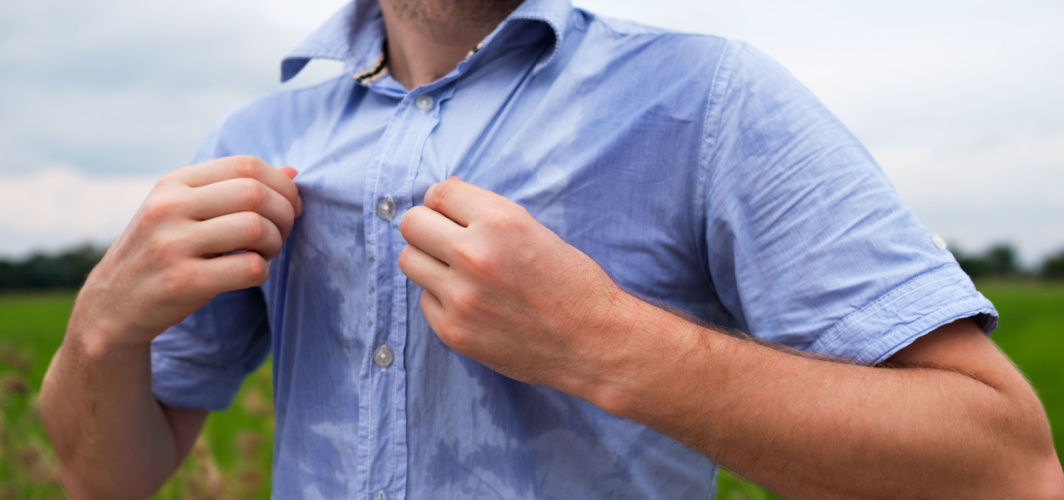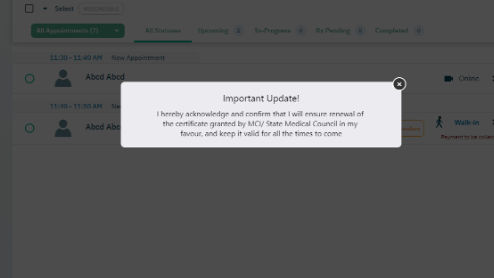General Health
7 Signs Of Low Blood Pressure You Must Know About
7 min read
By Apollo Pharmacy, Published on - 31 July 2023
Share this article
0
0 like

Low blood pressure, also known as hypotension, is a condition where the force of blood against the walls of the arteries is lower than normal. While high blood pressure often receives more attention, low blood pressure can also have significant effects on your health. Hence, it's important to be aware of the signs and symptoms so that you can address them promptly. In this article, we will delve into the causes, risk factors, signs, symptoms, and much more.
What is Low Blood Pressure?
Blood pressure is a vital measure of your overall health. It indicates the force exerted by blood against the walls of your arteries as your heart pumps it. Blood pressure is measured in millimetres of mercury (mmHg) and is expressed as two numbers: systolic pressure over diastolic pressure.
- Systolic pressure: The top number, represents the force when your heart beats and pumps blood.
- Diastolic pressure: The bottom number, represents the force when your heart is at rest between beats.
The blood pressure readings are:
| BP Range | Systolic | Diastolic |
| Normal BP | <120 mm Hg | <80 mm Hg |
| Low BP | <90 mm Hg | <60 mm Hg |
| High BP | >=130 mm Hg | >80 mm Hg |
Signs and Symptoms of Low Blood Pressure
Some of the common signs and symptoms associated with low blood pressure include:
- Dizziness and lightheadedness: Feeling dizzy or lightheaded, especially when standing up quickly, is a common symptom of low blood pressure. It occurs because there is not enough blood flow to the brain.
- Fainting or feeling faint: If your blood pressure drops significantly, you may experience fainting or feel like you are about to faint. This happens when the brain does not receive enough oxygen.
- Fatigue and weakness: Low blood pressure can leave you feeling tired and weak, making it difficult to carry out daily activities.
- Blurred vision: Insufficient blood flow to the nerves and blood vessels of the eyes can cause blurred vision or difficulty focusing.
- Nausea or vomiting: Low blood pressure may lead to feelings of nausea or even vomiting in some individuals.
- Rapid or shallow breathing: When blood pressure drops, the body tries to compensate by increasing the heart rate and breathing rate. This can result in rapid or shallow breathing.
- Cold, clammy skin: Low blood pressure can cause the skin to feel cold and clammy due to reduced blood flow to the extremities.
Causes and Risk Factors of Low Blood Pressure
Understanding the causes and risk factors associated with low blood pressure can help you identify and manage this condition effectively.
1. Medical conditions associated with low blood pressure
- Heart problems: Certain heart conditions, such as heart valve problems, heart attack, or heart failure, can lead to low blood pressure.
- Endocrine disorders: Several diseases like Addison's disease, diabetes, and thyroid disorders can cause low blood pressure.
- Nervous system disorders: Parkinson's disease, multiple system atrophy, and other neurological conditions can affect blood pressure regulation.
- Dehydration: Loss of fluids from vomiting, diarrhoea, or excessive sweating can lead to low blood pressure.
- Blood loss: Severe bleeding from injuries or underlying medical conditions can result in a drop in blood pressure.
- Medications: Certain medications, such as diuretics, alpha-blockers, and beta-blockers, can lower blood pressure.
2. Lifestyle factors that contribute to low blood pressure
- Nutritional deficiencies: Lack of essential nutrients like vitamin B12 and folate can contribute to low blood pressure.
- Prolonged bed rest: Being immobile for extended periods can cause a decrease in blood pressure.
- Excessive alcohol consumption: Drinking excessive alcohol can lead to a drop in blood pressure.
- Age: Older adults are more prone to developing low blood pressure due to changes in their cardiovascular system.
Diagnosing Low Blood Pressure
Your doctors may ask you to provide information about your symptoms and medical history to help determine the underlying cause of your low blood pressure. They would use a sphygmomanometer or a BP monitor to assess your blood pressure.
Furthermore, depending on your specific case, further tests such as blood tests, electrocardiogram (ECG), or echocardiogram may be ordered to evaluate your heart function and identify any other potential causes.
Prevention of Low Blood Pressure
By following prevention and self-care measures, you can effectively manage and maintain healthy blood pressure levels.
1. Tips for preventing low blood pressure episodes
- Stay hydrated: Drink plenty of water throughout the day to maintain adequate fluid levels in your body.
- Eat small, frequent meals: Consuming smaller, more frequent meals can help prevent drops in blood pressure after eating.
- Avoid sudden position changes: When getting up from a lying or sitting position, slow down to allow your body time to adjust.
- Exercise regularly: Engaging in moderate exercise, such as walking or swimming, can help improve blood circulation and regulate blood pressure.
- Limit alcohol consumption: Excessive alcohol intake can lower blood pressure, so it's important to drink in moderation. Men should not take more than 2 drinks a day while women should limit it to one drink a day.
- Wear compression stockings: These compression stockings can help improve blood flow by preventing blood from pooling in your legs.
- Manage stress: Stress can contribute to fluctuations in blood pressure, so finding healthy ways to cope with stress, such as deep breathing exercises or meditation, is essential.
2. Suggestions for maintaining healthy blood pressure levels
- Follow a balanced diet: Incorporate fruits, vegetables, whole grains, lean proteins, and healthy fats into your daily meals.
- Reduce sodium intake: Limit your consumption of processed foods, which are typically high in sodium. Opt for fresh, home-cooked meals instead.
- Maintain a healthy weight: Losing excess weight can help lower blood pressure. Aim for a body mass index (BMI) within the normal range which is 18.5 to 24.9.
- Quit smoking: Smoking can raise your blood pressure and increase your risk of developing cardiovascular diseases. Seek support to quit smoking if needed.
- Limit caffeine intake: While moderate caffeine consumption is generally safe, excessive amounts can temporarily raise blood pressure. Do not consume more than 400 mg of caffeine in a day.
- Get enough sleep: Aim for 7-8 hours of quality sleep each night. Poor sleep can negatively impact blood pressure levels.
- Regular medical check-ups: Regularly monitor your blood pressure and consult with your healthcare provider to ensure it remains within a healthy range.
Takeaway
Low blood pressure occurs when the force of blood against your artery walls is too low, which can lead to inadequate blood flow to your organs and tissues. It is essential to be aware of the symptoms and seek medical attention if you experience them. If you are experiencing any symptoms, it is important to consult a healthcare professional for a proper diagnosis.
Take care of your health by measuring your blood pressure frequently at home using a digital BP monitor.
FAQs
Q. Can low blood pressure be dangerous?
While low blood pressure is generally not considered as dangerous as high blood pressure, it can still lead to complications if left untreated. For example, severe hypotension can result in organ damage due to inadequate blood supply.
Q. What causes low blood pressure?
Several factors can contribute to low blood pressure, including dehydration, heart conditions, endocrine disorders, and medication side effects.
Q. How is low blood pressure diagnosed?
To diagnose low blood pressure, healthcare professionals measure your blood pressure using a sphygmomanometer. A reading below 90/60 mmHg is generally considered low.
Q. Can lifestyle changes help manage low blood pressure?
Adopting a healthy lifestyle can help manage low blood pressure. Staying hydrated, eating a balanced diet, limiting alcohol consumption, avoiding prolonged standing or sitting, and getting regular exercise can help manage low blood pressure.
Q. When should I see a doctor about low blood pressure?
If you experience frequent episodes of low blood pressure or have concerns, it is best to consult with your healthcare provider for a proper evaluation and guidance.
General Health
Consult Top Cardiologists
View AllLeave Comment
Recommended for you

General Health
Can Revital Really Help In Healthy Ageing?
Revital supports healthy ageing by providing essential vitamins and minerals that may be lacking in the diet. It enhances cognitive function, strengthens the immunity system and supports muscle health.

General Health
Is Continuous Glucose Monitoring (CGM) Beneficial For Diabetics?
Discover how continuous glucose monitoring (CGM) systems are revolutionising diabetes care. Stay informed about the latest guidelines, technologies and lifestyle factors that can help you effectively manage your diabetes.

General Health
Sweating Way Too Much? It Could Be A Sign Of This Disease!
The article discusses the link between profuse sweating and heart diseases, outlining the possible causes and explaining when to seek medical attention. While excessive sweating can be a symptom of heart disease, it can also be caused by other factors, making it important to consult a healthcare professional for proper diagnosis and treatment.
Subscribe
Sign up for our free Health Library Daily Newsletter
Get doctor-approved health tips, news, and more.
Visual Stories

Science-backed Home Remedies for Burns and Blisters
Tap to continue exploring
Recommended for you

General Health
Can Revital Really Help In Healthy Ageing?
Revital supports healthy ageing by providing essential vitamins and minerals that may be lacking in the diet. It enhances cognitive function, strengthens the immunity system and supports muscle health.

General Health
Is Continuous Glucose Monitoring (CGM) Beneficial For Diabetics?
Discover how continuous glucose monitoring (CGM) systems are revolutionising diabetes care. Stay informed about the latest guidelines, technologies and lifestyle factors that can help you effectively manage your diabetes.

General Health
Sweating Way Too Much? It Could Be A Sign Of This Disease!
The article discusses the link between profuse sweating and heart diseases, outlining the possible causes and explaining when to seek medical attention. While excessive sweating can be a symptom of heart disease, it can also be caused by other factors, making it important to consult a healthcare professional for proper diagnosis and treatment.

